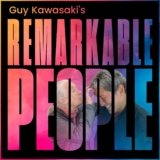.lightweight-accordion { border: 1px solid #ccc; border-radius: 4px; padding: 5px; margin: 5px 0; } .time { font-size: 0.875rem; /* Option 3: Using rem ...
.lightweight-accordion { border: 1px solid #ccc; border-radius: 4px; padding: 5px; margin: 5px 0; } .time { font-size: 0.875rem; /* Option 3: Using rem ...
.lightweight-accordion { border: 1px solid #ccc; border-radius: 4px; padding: 5px; margin: 5px 0; } .time { font-size: 0.875rem; /* Option 3: Using rem ...
.lightweight-accordion { border: 1px solid #ccc; border-radius: 4px; padding: 5px; margin: 5px 0; } .time { font-size: 0.875rem; /* Option 3: Using rem ...
.lightweight-accordion { border: 1px solid #ccc; border-radius: 4px; padding: 5px; margin: 5px 0; } .time { font-size: 0.875rem; /* Option 3: Using rem ...
.lightweight-accordion { border: 1px solid #ccc; border-radius: 4px; padding: 5px; margin: 5px 0; } .time { font-size: 0.875rem; /* Option 3: Using rem ...
In this episode of Remarkable People, join host Guy Kawasaki as he connects with Chandrika Tandon, a business leader, humanitarian, and Grammy-nominated ...
In this episode of Remarkable People, meet Stanley Andrisse, a remarkable individual who defied all odds. From a troubled past with felony convictions and a ...
In this episode of Remarkable People, join host Guy Kawasaki as he engages in a thought-provoking conversation with Dr. Pamela Ellis, also known as “The ...
In this episode of Remarkable People, join host Guy Kawasaki as he engages in a fascinating conversation with Ted Scambos, a Senior Research Scientist at the ...
In this episode of Remarkable People, join host Guy Kawasaki for an enlightening conversation with Stephen Pyne, a distinguished wildfire expert. ...
In this episode of Remarkable People, join host Guy Kawasaki as he engages in a thought-provoking conversation with Raquel Willis, a trailblazing Black ...
In this episode of Remarkable People, join host Guy Kawasaki as he engages in a thought-provoking conversation with Dr. Cecilia Conrad, the visionary CEO of ...
In this episode of Remarkable People, join host Guy Kawasaki for an enlightening conversation with Dr. Jerry Silver, a distinguished neuroscientist and ...
In this episode of Remarkable People, join host Guy Kawasaki as he dives into the captivating story of Joe Foster, one of the minds behind the iconic brand ...
In this episode of Remarkable People, join host Guy Kawasaki as he engages in a thought-provoking conversation with Kim Komando, one of America’s most ...
Welcome to a remarkable episode of Remarkable People, where Guy Kawasaki engages in a thought-provoking conversation with Patrice Keet & Melissa ...
In this episode of Remarkable People, join host Guy Kawasaki as he engages in a thought-provoking conversation with Taylor Lorenz, an acclaimed technology ...
In this episode of Remarkable People, join host Guy Kawasaki as he engages in a captivating conversation with Barbara Jenkins, an adventurer and author known ...
In this episode of Remarkable People, join host Guy Kawasaki for a thought-provoking conversation with Ellen Langer, renowned as the “mother of ...
- « Previous Page
- 1
- …
- 4
- 5
- 6
- 7
- 8
- …
- 17
- Next Page »

